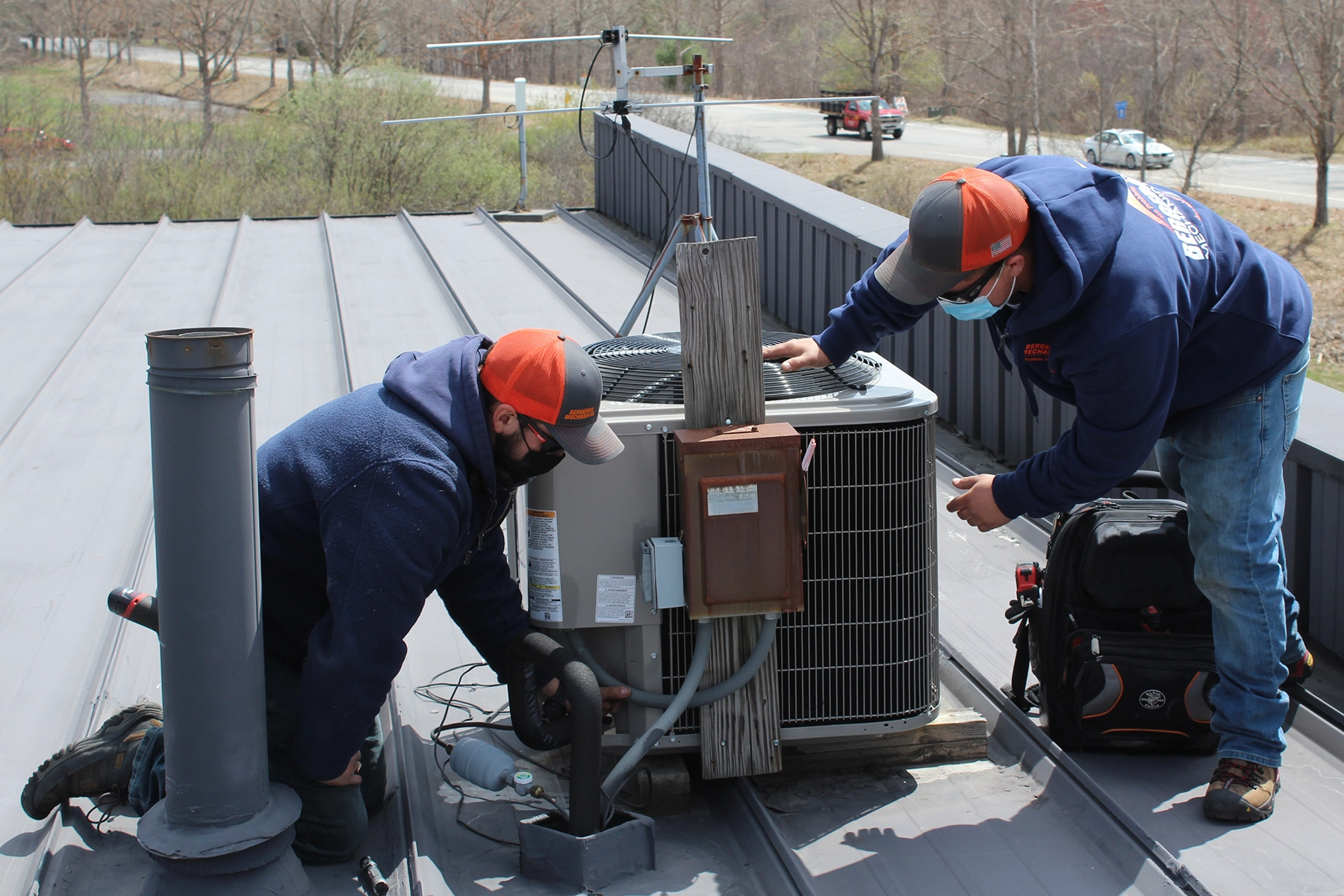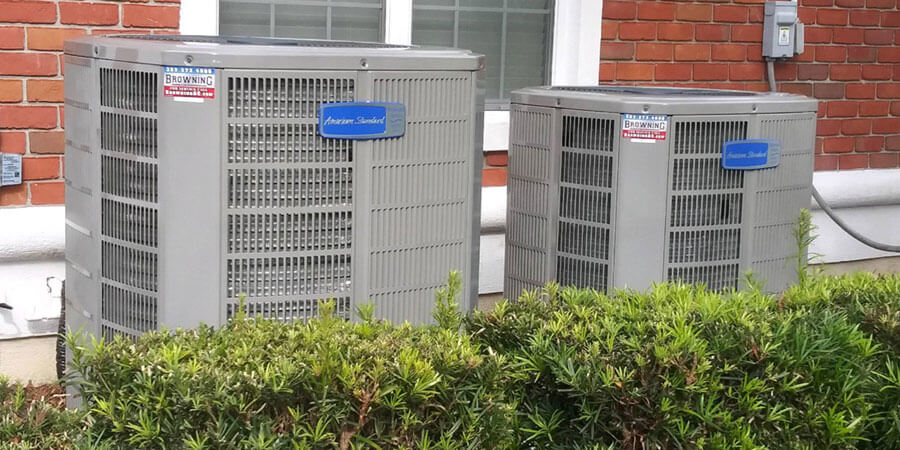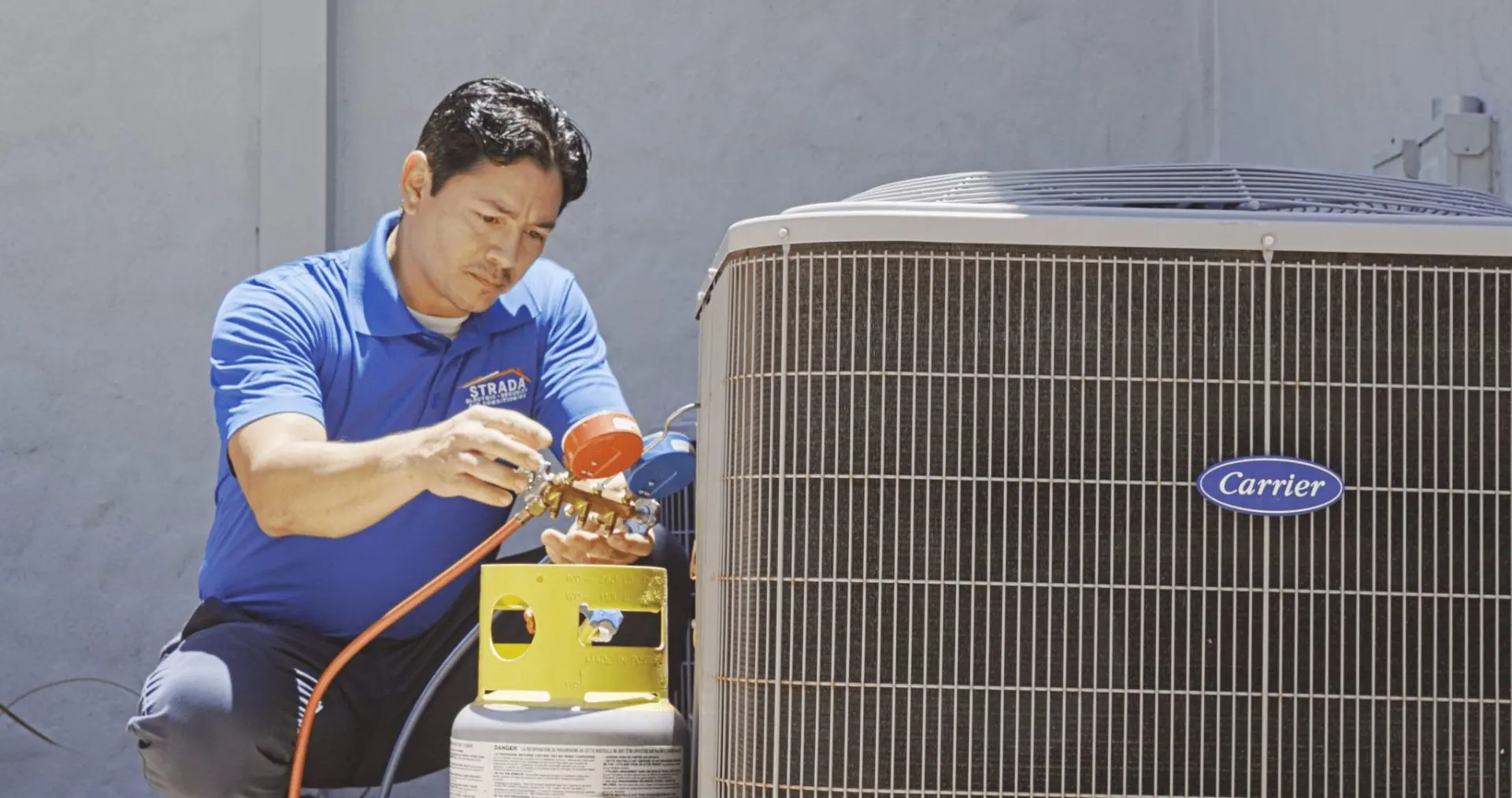The Significance of Cooling And Heating Installation: Key Considerations for a Comfortable Indoor Environment
The installation of a Heating and cooling system is a crucial component in attaining an energy-efficient and comfortable indoor setting. Aspects such as the suitability of the system for specific structure requirements, appropriate sizing to prevent inadequacies, and the expertise of contractors for a top quality setup play pivotal functions. The adoption of innovative innovations can considerably boost system efficiency.
Choosing the Right System

When choosing an a/c system, it is crucial to assess the capability needed to successfully warm or cool down the room without straining the system, which can bring about raised wear and functional prices. Consulting with a specialist HVAC contractor can provide valuable insights right into picking a system that straightens with both the anticipated usage and the architectural layout patterns of the structure.
In addition, taking into consideration the assimilation of clever modern technology can improve system administration and tracking, providing higher control and potential cost financial savings. By diligently analyzing these variables, one can make sure the choice of a heating and cooling system that not only fulfills prompt demands yet likewise adds to long-lasting operational sustainability and occupant convenience.
Comprehending Energy Effectiveness
Comprehending power efficiency is essential when taking into consideration a HVAC setup, as it straight influences both the environmental footprint and the operational expenses of the system. The performance of a HVAC system is usually shown by rankings such as SEER (Seasonal Energy Effectiveness Proportion) for air conditioners or AFUE (Yearly Gas Application Efficiency) for furnaces.

Purchasing an energy-efficient cooling and heating system not only translates to set you back financial savings however also adds favorably to environmental conservation by decreasing greenhouse gas exhausts. In addition, lots of territories use incentives or discounts for the installment of high-efficiency systems, additionally enhancing their financial allure.
When reviewing power performance, take into consideration innovative attributes such as variable rate motors, smart thermostats, and zoning capacities. These technologies improve the system's capability to adapt to differing need, therefore maximizing energy usage. It is critical to seek advice from with cooling and heating specialists that can give understandings into the most effective options tailored to particular climate problems and usage patterns, making sure optimal performance and comfort.
Relevance of Proper Sizing

On the other hand, a small heating and cooling system will struggle to reach the desired temperature, particularly throughout severe weather problems. This can cause continual procedure, bring about higher power expenses and potential getting too hot of system components. Furthermore, inadequate sizing can bring about inconsistent temperature level circulation, causing certain locations of a structure to be too amazing or also cozy.
To attain the correct sizing, a detailed lots estimation is vital. This entails examining various variables such as the structure's square video, insulation levels, home window types, and regional climate conditions. By accurately identifying the heating and cooling down demands of a room, HVAC professionals can recommend systems that guarantee efficient operation, lowered energy usage, and improved interior comfort.

Ensuring High Quality Installment
A seamless HVAC installation is the cornerstone of a system's long life and efficiency. This expert ought to possess in-depth expertise of diverse systems and be adept at evaluating the particular needs of the structure.
Proper installation goes beyond mere positioning of tools. It involves exact calibration to make certain optimum air movement, reliable power intake, and consistent temperature level distribution. This consists of exact ductwork setup, guaranteeing links are leak-free and safe and secure, which is important for preserving system efficiency and indoor air top quality.
Moreover, the implementation of innovative diagnostic devices throughout setup can detect prospective issues early, avoiding pricey repair work and expanding the lifespan of the system. The specialist should likewise make certain that all components are suitable which the system follows regional building regulations and policies.
Routine Upkeep Practices
When the structure for a high-performing cooling and heating system is developed via quality setup, the emphasis needs to change to normal maintenance methods to make sure ongoing performance and reliability. Routine upkeep not just expands the life-span of the system but likewise boosts interior air quality, reduces energy consumption, and stops pricey fixings. Important maintenance tasks include on a regular basis changing look at these guys air filters, cleaning up evaporator and condenser coils, and checking the system for clogs or leakages.
Air filters should be replaced or cleaned each to 3 months, relying on use and ecological aspects. This straightforward job can substantially boost air circulation and system effectiveness (air conditioning contractor in Brownwood TX). Cleaning up the evaporator and condenser coils prevents dust build-up, which can hinder warmth absorption and cooling ability. In addition, expert service technicians must examine the system each year, inspecting for refrigerant degrees, electrical connections, and overall system efficiency.
Attention to ductwork is also crucial; securing and cleaning up air ducts frequently protects against air loss and contamination. Executing an upkeep timetable ensures that minor concerns are dealt with before they intensify, guarding the system's operational integrity. By adhering to these maintenance techniques, homeowners can optimize their cooling and heating system's functionality and preserve a comfortable interior environment year-round.
Conclusion
By selecting an ideal system tailored to particular building demands, comprehending energy performance, and making certain right sizing, inadequacies can be reduced. The involvement of experienced professionals guarantees top quality setup, while the hvac professionals near me integration of advanced modern technologies improves system performance and surveillance.
Numerous kinds of A/c systems are available, including split systems, crossbreed systems, duct-free systems, and packaged home heating and air systems, each with distinct advantages and constraints.
Recognizing energy performance is essential when taking into consideration an A/c installation, as it straight impacts both the environmental impact and the operational expenses of the system. The performance of an A/c system is generally shown by rankings such as SEER (Seasonal Energy Efficiency Ratio) for air conditioners or AFUE (Yearly Fuel Use Effectiveness) for furnaces (air conditioning repair service in Brownwood TX).Once the foundation for a high-performing A/c system is developed via top quality installment, the focus should shift to normal upkeep practices to ensure continued efficiency and dependability. Furthermore, expert specialists must evaluate the system annually, checking for cooling agent degrees, electric links, and total system efficiency